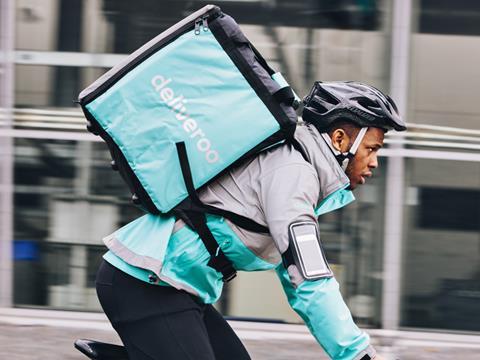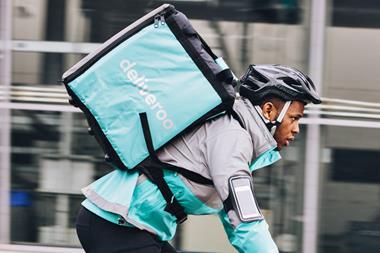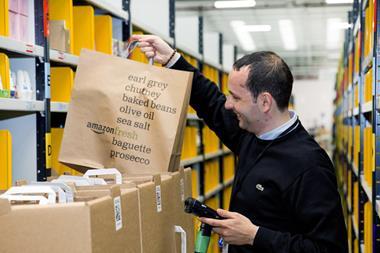
Convenience stores are no longer convenient enough. Forget the arduous task of going outside. Today’s consumers can have everything they need delivered at the click of a button with services like Amazon Prime Now.
Now traditional c-stores can grab a slice of this market by partnering with restaurant delivery service Deliveroo, which will deliver alcohol and snacks from their branches within just half an hour. The operation has seen 25% month-on-month growth since it launched in 2013; a new retailer seems to sign up almost every week. So how does it work? And is the effort worth it?
For a single-site independent, signing up to Deliveroo can take as little as half an hour. Shortly after approval, an iPad is installed in store and connected to the wi-fi network. When a customer places an order on the Deliveroo app, the iPad flashes to notify the retailer. There is a 12-minute window to accept the order, pack it and notify the driver, who will swing round and pick it up for delivery.
Deliveroo by numbers:
75 UK cities
3,000 drivers
8,000+ restaurants & retailers
“Partnering with Deliveroo is simple,” says a Deliveroo spokesman. “Once partners have shared information on their location and stock with us, we work with them to create a menu and set them up fully on our site. We also provide them with a dedicated local team to help with day-to-day activity.”
But there is a catch. Deliveroo takes a cut of everything sold, which can be up to 30% of an order - wiping out many retailer margins.
To get around this, some retailers are rebranding their online shop on the app without any reference to their store name or symbol group, allowing them to increase prices without reflecting badly on the value of their in-store range.
But this does make it difficult to sell own-label lines, and if a retailer accidentally packs a price-marked bottle in the order, they may end up with angry customers who feel ripped off.
The service is also geo-specific and will only allow customers to order within a two-mile radius of the store.
Retailer Paul Stone, who started The Drinks Factory on Deliveroo from four of his Spar stores, believes the partnership is nevertheless worth a shot.
“It’s all about how bricks and mortar and the internet work together in sales terms,” he says. “We don’t know how well it’s going to work but you need to explore these new sales channels. We need to harness the power of the smartphone.”
Suppliers also see an opportunity in the tie-up. Heineken has launched Brew House, a network of London-based independent convenience stores, which sell the group’s alcohol brands through the app.
Costcutter retailer Kiri Kiritharan set up a Brew House store with Deliveroo three months ago. Although he gets a modest three orders a week through the app, he says business is growing steadily.
“Once it has picked up, it will be really worthwhile,” says Kiritharan. “We’re not doing or spending anything extra to run it so it’s a no-brainer. I think it’s important for c-stores to have an online presence. Obviously Costcutter isn’t set up to do online deliveries at the moment but with the likes of the multiples and Amazon coming into the market if there’s any room for us to deliver then it’s a good idea to do it.”
However, Bryan Roberts of TCC Global believes demand may only ever only be small. “I think e-commerce businesses sometimes overestimate levels of urgency and how many times you really need something in 30 minutes,” he warns.
But even if it does only tap a niche market, it is an income convenience stores will miss out on if they do nothing and ignore online altogether.



















No comments yet